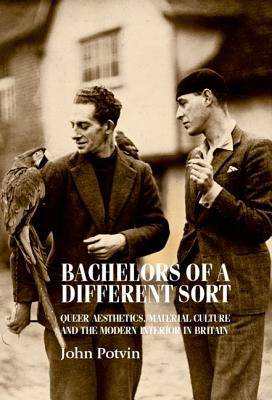
- Retrait gratuit dans votre magasin Club
- 7.000.000 titres dans notre catalogue
- Payer en toute sécurité
- Toujours un magasin près de chez vous
- Retrait gratuit dans votre magasin Club
- 7.000.000 titres dans notre catalogue
- Payer en toute sécurité
- Toujours un magasin près de chez vous
Bachelors of a Different Sort
Queer Aesthetics, Material Culture and the Modern Interior in Britain
John Potvin
166,95 €
+ 333 points
Format
Description
The bachelor has long held an ambivalent, uncomfortable and even at times an unfriendly position in society. This book carefully considers the complicated relationships between the modern queer bachelor and interior design, material culture and aesthetics in Britain between 1885 and 1957. These bachelors of a different sort created spaces that were centres of community, creativity and companionship, since long forgotten. The seven deadly sins of the modern bachelor (queerness, idolatry, askesis, decadence, decoration, glamour and artifice) as the author has identified them, comprise a contested site freighted with contradiction and reveal in their respective ways the distinctly queer twinning of shame and resistance. All the bachelors whose aesthetic lives are contained in this book were men of the creative arts, whether as writers, collectors, playwrights, actors, designers, antiquarians, sculptors, painters, photographers and/or illustrators. The first book to explore queer sexualities and the modern interior beyond the urban bias of most scholarship, this book tackles a wide range of significant analyses of some of the period's best-known figures whose city and country interiors have largely gone unnoticed and unanalysed. As a result, it pays close attention to particular homes and domestic interiors of Lord Ronald Gower, Alfred Taylor, Oscar Wilde, Charles Shannon and Charles Ricketts, Edward Perry Warren and John Marshall, Sir Cedric Morris and Arthur Lett-Haines, Noël Coward and Cecil Beaton. Richly illustrated and written in a lively and accessible manner, Bachelors of a different sort is at once theoretically ambitious and rich in its use of archival and various historical sources.
Spécifications
Parties prenantes
- Auteur(s) :
- Editeur:
Contenu
- Nombre de pages :
- 311
- Langue:
- Anglais
- Collection :
Caractéristiques
- EAN:
- 9780719084997
- Date de parution :
- 02-05-14
- Format:
- Livre relié
- Format numérique:
- Ongenaaid / garenloos gebonden
- Dimensions :
- 170 mm x 236 mm
- Poids :
- 907 g







